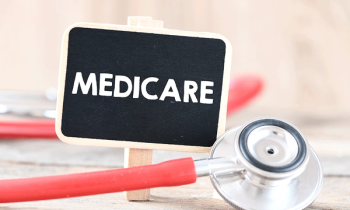
MHE Staff
Articles by MHE Staff


Harvard researchers say, well, maybe.

Ten years ago, specialty accounted for 15% to 20% of the money spent on drugs, according to Prem Shah, executive vice president of specialty pharmacy and product innovation at CVS Health.

The Association of Community Cancer Centers launched the ACCC Community Oncology Research Institute, which builds on the organization's mission to close the gap in cancer research through optimal community oncology partnerships.

COVID-19 vaccination race among pharma giants results in brand value growth – Pfizer up 6%, AstraZeneca up 18%, and Sinopharm up 58%.

Acquisition to unite previously fragmented provider and payer insights to drive optimal healthcare outcomes.

Precision medicine is getting that much more precise. Today's FDA go-ahead is for a J&J drug that is designed to treat the 2% to 3% of NSCLC patients wiht EGFR exon 20 insertion mutations.

Matthew Reynolds, PhD, vice president of real-world evidence at IQVIA, discusses his appreciation for telehealth and remote care, but feels over the next year or so we're going to be seeing more studies come out questioning if some telehealth is needed in certain areas. The discussion came from findings of a recent paper with the National Pharmaceutical Council on how COVID-19 affected real-world data and research.

Amy Abernethy, M.D., Ph.D., hematologist/oncologist and palliative medicine physician and former principal deputy commissioner of the FDA, discusses how the agency handled COVID-19 and what lessons learned will help going forward. Abernethy also addresses if she feels there are enough safeguards of the FDA's independence in place, and reflects on the open FDA commissioner position.

PBMs say exclusions are important for negotiating lower prices on behalf of health plans and members. Some payer and provider groups say they interfere with patient access to medicines.

"COVID. KNOW MORE," is an innovative, timely new initiative empowering Black Americans with the latest information, resources, and updates on COVID-19.

A 13% decline in the past year continues downward. Some of the decline might be explained by pandemic-related drop in healthcare utilization.

The Institute for Clinical and Economic Review's price range is far below the $50,000 per year envisioned by some market analysts.

A recent study from American Accounting Association finds health insurance companies are overestimating costs associated with patient care to avoid triggering rebate provisions in the Affordable Care Act.

New starts fell off sharply last spring and the flu season "all but disappeared," according a summary of CVS Caremark's 2020 drug spend report.

Six-year plan to invest $11.5 billion with donor support to accelerate research and treatment worldwide for children with catastrophic diseases.

Centralized resource streamlines information sharing between health plans, Medicaid agencies and third-party app developers ahead of CMS Interoperability and Patient Access rule deadlines.

Biomarker status can help clinicians and patients make informed, personalized treatment decisions, whether the choice is an FDA-approved targeted therapy or a clinical trial.

The use of accurate biomarkers for detecting autism spectrum disorder could result in saving billions of dollars in healthcare costs, according to a paper recently published in the journal Autism Research.

The Blue Cross Blue Shield Association's new strategy sets their goal to reduce racial disparities in maternal health by 50% in five years.

A recent survey by Scripta Insights shows 96% of consumer are willing to make a prescription change as far as switching their medications, forms and where they fill in order to save money.

Whether the cup of value-based care is half empty or half full may depend on your point of view. But the grail certainly isn’t full. Some of the leading lights at the Leonard Davis Institute (LDI) of Health Economics at the University of Pennsylvania have released recommendations to hasten the volume-to-value healthcare transformation.

A couple of years ago, there was a lot of chatter about the Amazonifcation of healthcare. Well, that hasn’t happened. But the company is breaking into a sector of the economy that accounts for almost 18% of the American gross domestic product. Perhaps healthcare’s journey of Amazonifcation has started but is going step by step.

The Biden administration put a hold on the new and pending rule changes that the outgoing Trump administration made, so whether the Medicare Coverage of Innovative Technology pathway will ever take effect is uncertain. But many providers and payers — and presumably most device makers — are keeping a close watch on the fate of the pathway.

Recent report from Syft highlights hospital supply chain challenges at the point-of-use and key areas that need improvement.

3 minutes is all the time it takes to complete.

As COVID-19 cases in nursing homes decline rapidly, the healthcare industry calls on congress to take on needed reform to address systemic issues facing industry.

UM School of Medicine discovery opens the door to testing more effective drugs for treating COVID-19 patients.

In this recent report, recommendations for ways to safeguard the U.S. from future pandemics are included.

Analysis also shows higher proportion of low- and modest-income beneficiaries in Medicare Advantage than Traditional Medicare.
